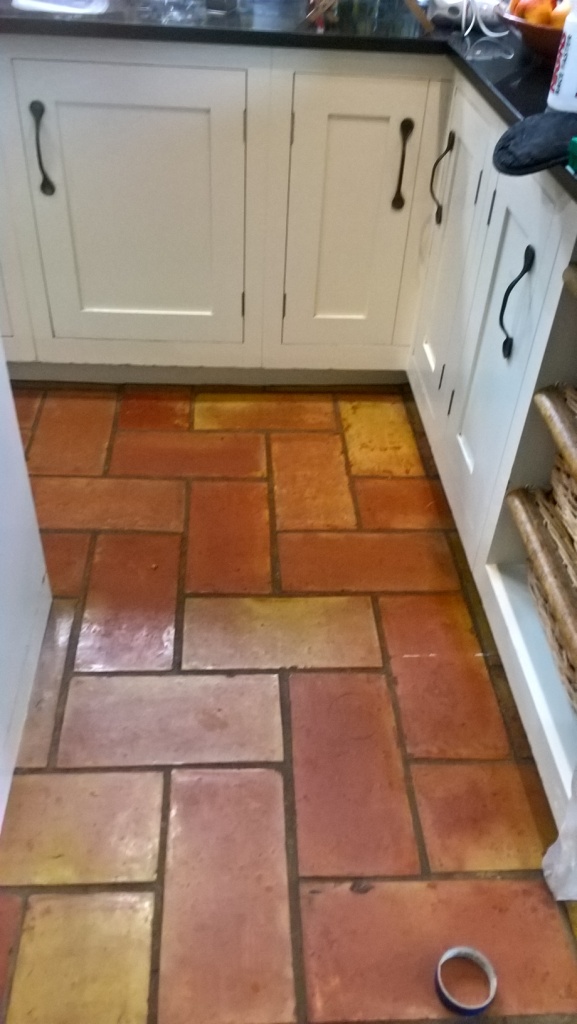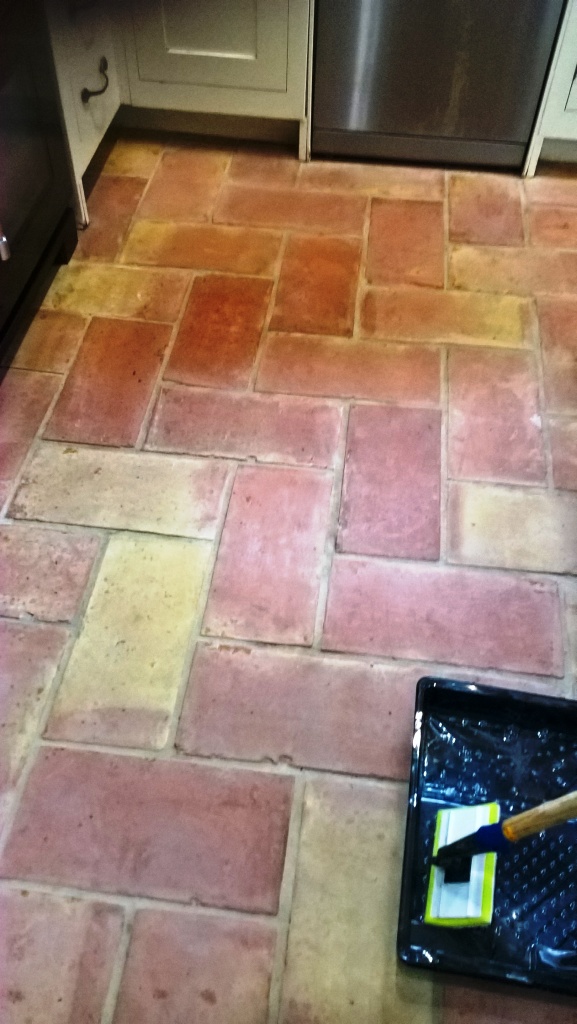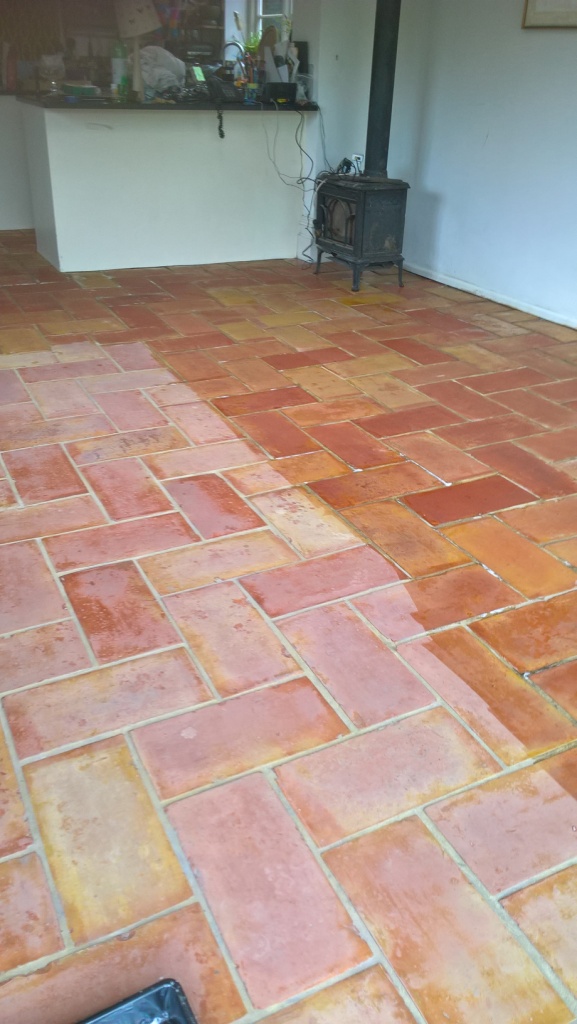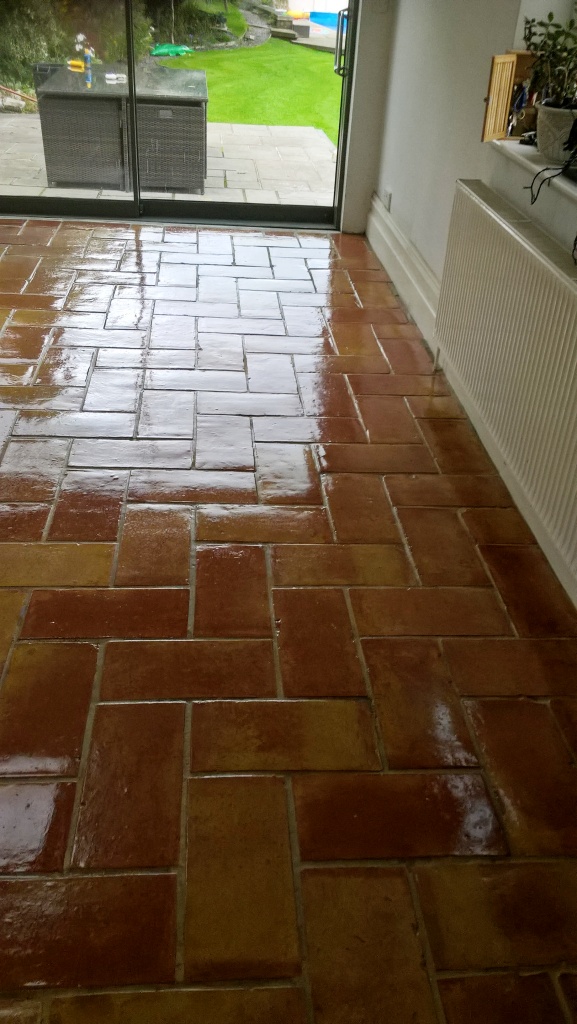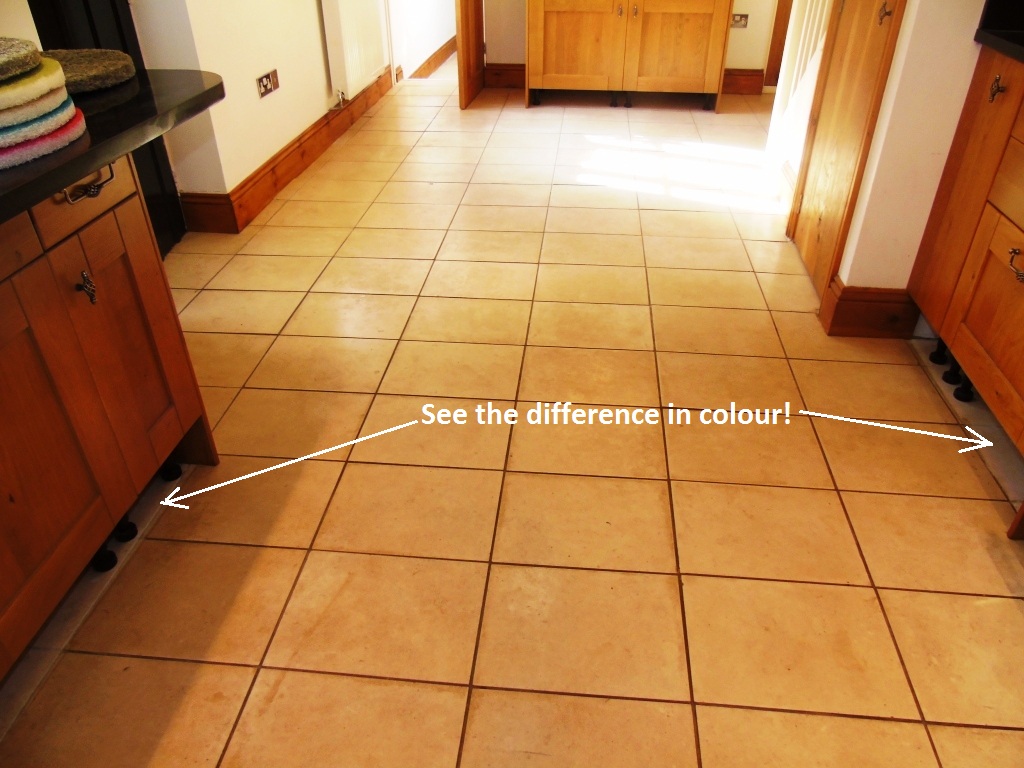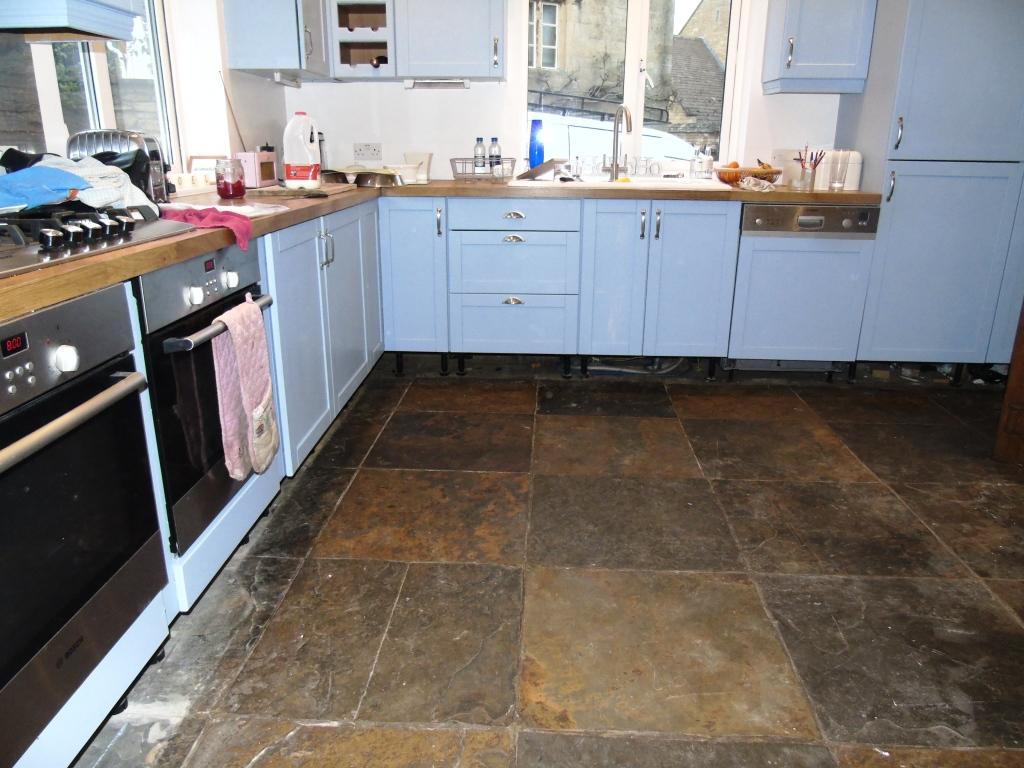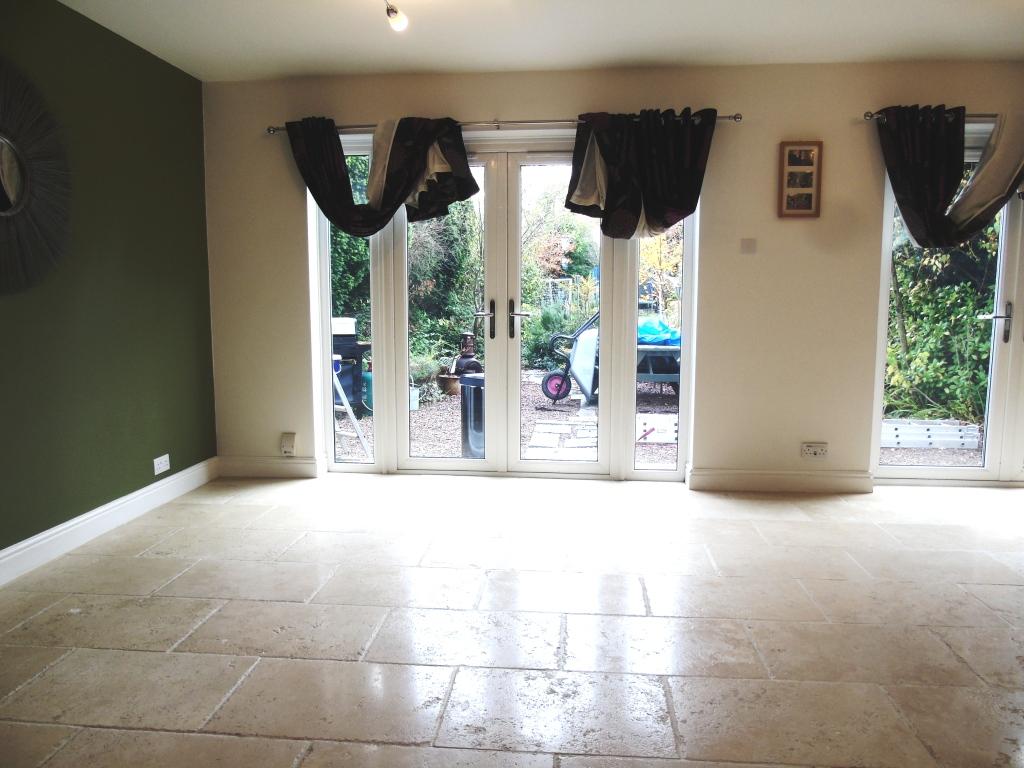Poorly Maintained Kitchen Quarry Tiles Rejuvenated in Cheltenham
It’s often quite surprising what condition we find some tiles in when were asked to come out and survey the floor. Case in point being this Quarry tiled kitchen floor I was asked to look at by a customer in Cheltenham, which as you may know is particularly famous for its racecourse and the top-secret GCHQ.
Upon arrival at the property, I found that the floor was not in great condition. For some reason, it had been painted over with red tile paint and then covered with a wax coating which was easily scratched. To Make the situation worse, there were around 20 tiles in the floor with holes in them that had simply been filled with concrete.
 |
 |
Clearly, the tiles had not been maintained properly in the past but fortunately the current owner of the property who was keen to have them restored had called in Tile Doctor and after a demonstration clean I was booked to come back and correct the numerous issues.
Cleaning a Damaged Quarry Tiled Kitchen Floor
On the first day of the restoration, I started by applying a solution of Tile Doctor Remove and Go across the entire floor and leaving the product to dwell for around 30 minutes. Remove and Go is a powerful stripper designed to loosen paint splashes, adhesive stains and many types of urethane and wax coatings so that they can be easily removed.
After leaving the product to dwell, I could use a handheld scrapper to simply remove the wax coating and layer of paint on the floor. This process took about half a day; during the second half of the day, I spent my time removing the damaged tiles and replacing them with new Quarry tiles that had been sourced to match nicely with the existing floor.

Sealing a Quarry Tiled Kitchen Floor
Once the deep clean had been completed, I left the floor dry for two days to allow sufficient time for it to dry thoroughly. Upon returning to the property, I ran a damp test to see if the tiles were dry enough to be sealed. To my surprise, the floor recorded only around 4% moisture even though the property is relatively old and is unlikely to have a damp proof membrane installed.
Nonetheless, this meant I could seal the floor. I did this by using a single coat of our impregnating, colour-intensifying sealer known as Tile Doctor Colour Grow, followed by three coats of Tile Doctor Seal and Go, a water based sealer which provides a high-quality satin finish.
 |
 |
The deep clean, combined with the application of two different sealers, really helped to give these Quarry tiles a new lease of life. The customer was very happy indeed – in fact, had this been an exam, I’m certain I would’ve received top marks and it was certainly a major improvement on how they were before.
Professional Restoration of a Quarry Tiled Kitchen Floor in Gloucestershire
Poorly Maintained Kitchen Quarry Tiles Rejuvenated in Cheltenham Read More »




